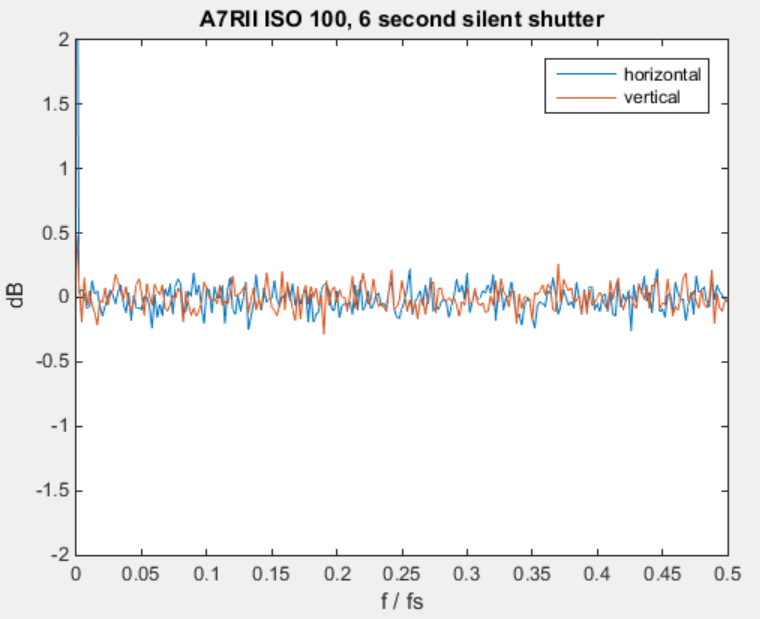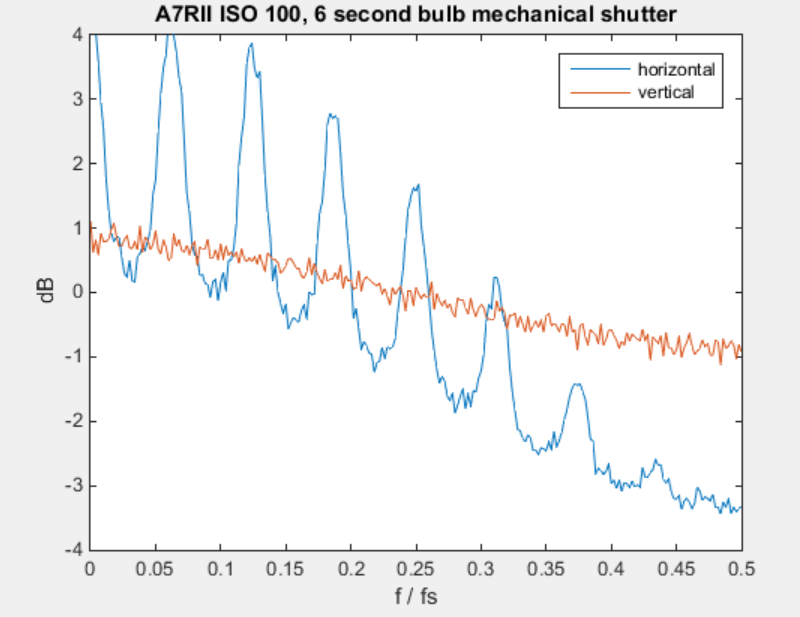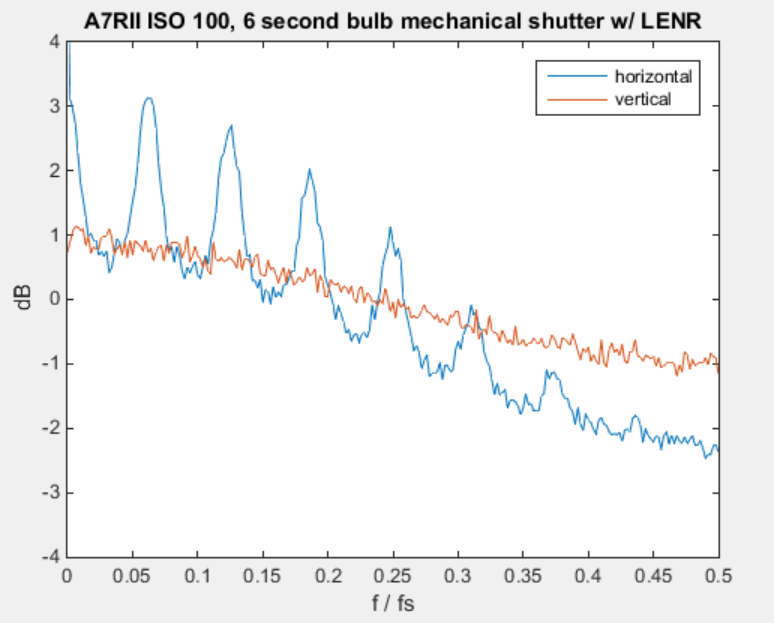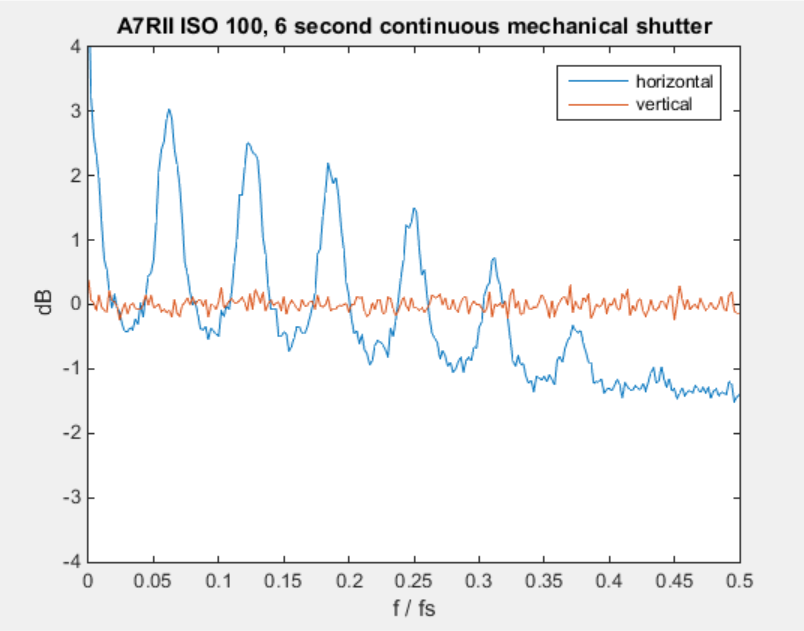I received a request to look at what, if any, lowpass filtering the a7RII performs on dark-field images at ISO 100. Dark field images are mostly Gaussian noise at higher ISOs, although they can contain low-frequency energy do to pattern variations. A standard technique to remove the pattern variations is to subtract two dark frames and analyze the result. I have used that technique before, and will again, but I have found that it confuses people, and I didn’t do it here.
The first test case is a 6 second exposure using silent shutter, single shot mode, long exposure noise reduction (LENR, aka dark frame subtraction) turned off. The camera timed the exposure:
There is no evidence of any low pass filtering. There is evidence of horizontal pattern noise in the form of a high component at extreme low frequency.
Next up, a 6 second bulb exposure in single shot mode with LENR off:
We have evidence of lowpass filtering in both the vertical and horizontal directions. In addition, there is a periodic effect in the horizontal direction. I don’t know what causes that, although I’ve seen it before in some a7S dark field images.
Now, the same bulb exposure with LENR on:
Not much different, except that the periodic component in the horizontal direction is reduced. I take that to mean that the periodic component has a pattern component (not variable frame to frame), and a variable component, but I suppose it’s possible the processing is different.
And lastly, a 6 second camera-timed exposure in continuous shutter mode:
There is no evidence of lowpass filtering in the vertical direction. The periodic component falls in modulation index as the frequency goes up, however.
I seriously doubt whether there is intentional anisotropous filtering being done by the Sony engineers. Therefore I think we can look to the vertical frequency lines to see what the camera’s design engineers deliberately put there. That would say that the silent shutter image and the continuous shutter images have no lowpass filtering added, while both of the bulb images do.




Interesting case study here. Thanks for taking the time to put it together.